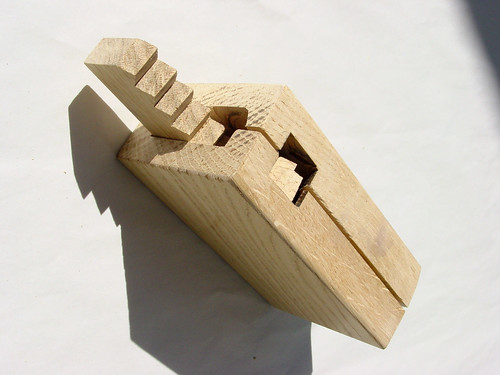We’ve been working with Chris Heathcote at Nokia, Insight Foresight on mobile phone personalisation. We’re addressing questions about mobile phone manufacture, and who takes responsibility for how they’re used, and what they represent. The work is grounded heavily in prototyping and making, building on research Chris has already done. We’re documenting the project’s progress and the physical outputs here.
Some early starting points for the project have been to look at how materials affect the form of the mobile, and in particular, what new opportunities for change they give us. Note that this isn’t a product design brief, so we’re not trying to improve the design of mobile phones in general. But rather we’re looking at what happens when the shell of the mobile is made out of paper, for example, or is stitched. These present opportunities that only emerge when you’re not having to go through a 10k+ unit production run. For example, the highest quality products, historically, were often hand-made, and these were the ones most tailored to specific needs.
As well as looking at how materials (and the practices of the people who work with these materials) affect the phone, we’re also looking at how personalisation of Nokia phones can change their meaning or impact culturally.
Large-scale manufacture is inevitably distanced from the very precise social context of use. Once we bring in short-run manufacture, however, the mobile can be more culturally situated. Manufacture can occur locally, and be influenced and shaped by everyday usage. Consider, for example, if there was a factory at the end of your road, making mobile phones in runs of only 200. Would that change the way you engage with the production process or, eventually, alter the way phones existed in the social life of you and your neighbours? We’re pretty sure it would, and that’s one of the areas of investigation.
(Given this, we’re also brushing up against questions about bespoke creation of expensive items. Electronics are often seen as disposable, and on first glance this jars with traditional luxury goods: Antiques are handed down over generations. Then again, expensive clothes are sometimes kept for a single season. So what happens when the clip-on cover is worth more than the phone it houses?)
To sum up: We’re working with practitioners of a number of different crafts to explore how their materials affect the mobile phone. We’re experimenting with the short-run manufacturing techniques available in small workshops and on desktops to look at, for example, the impact of Rapid Form Prototyping on phone housing. We’ll be presenting what we make, and what we figure out, on this blog.
And of course, all comments are welcome! Our email address is below, and please mark your email as private if you’d prefer it not to be on this blog.
—Jack and Matt.
